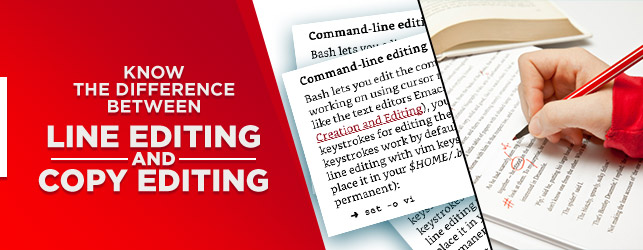Know the Difference Between Line Editing and Copyediting
When it comes to the writing and publishing process, editing is crucial in shaping a piece of work into a polished, professional final product. While both line editing and copyediting are essential stages in the editing process, many people confuse the two. Understanding the difference between line editing and copyediting can help writers, editors, and authors alike create high-quality content that stands out.

What is Line Editing?
Line editing focuses on the language and style of the text. It involves a deep dive into the sentence structure, clarity, flow, tone, and overall readability of the content. A line editor's role is to ensure the text reads smoothly and communicates the intended message in the most effective way possible. This type of editing can be likened to a fine-tuning of the manuscript at a deeper, sentence-by-sentence level.
Key Areas of Focus in Line Editing:
- Sentence Structure: Improving readability by ensuring sentences are clear, concise, and well-organized.
- Word Choice: Choosing words that best convey the writer's intended meaning, tone, and style.
- Clarity: Ensuring that ideas are expressed clearly and logically, making the content more accessible to the reader.
- Flow: Ensuring the text flows well from one thought to the next without awkward transitions or jarring breaks in the narrative.
- Consistency in Tone and Style: Making sure that the tone, whether formal, informal, academic, or conversational, is consistent throughout the document.
Line editing is about polishing the narrative and language to make it engaging and fluent.
What is Copyediting?
Copyediting, on the other hand, is focused on the mechanics of the text. It’s about ensuring that the content is grammatically correct, free from typographical errors, and follows the established rules of style and formatting. While line editing deals with the creative flow of the text, copyediting ensures that the work is clean, consistent, and error-free. Copyeditors focus more on the technical aspects of writing than the creative elements.
Key Areas of Focus in Copyediting:
- Grammar and Punctuation: Correcting grammatical errors, such as subject-verb agreement, punctuation mistakes, and sentence fragments.
- Spelling and Typos: Ensuring words are spelled correctly and that there are no typographical errors.
- Consistency: Making sure that there is consistent use of capitalization, headings, bullet points, and numbering across the document.
- Formatting: Ensuring the document adheres to the required style guide (e.g., APA, MLA, Chicago) and is formatted consistently for a professional appearance.
- Fact-Checking: Verifying that all information, such as dates, names, and factual claims, is accurate.
Copyediting is typically a more technical and procedural process, ensuring that the manuscript adheres to grammatical rules and is free from distracting errors.
Key Differences Between Line Editing and Copyediting
| Line Editing | Copyediting |
|---|---|
| Focuses on style, tone, and structure of the text. | Focuses on grammar, spelling, punctuation, and formatting. |
| Works to improve sentence clarity and flow | Ensures error-free text at the word and sentence level. |
| Often involves rewriting or rephrasing sentences for better readability. | Corrects spelling mistakes and inconsistent formatting. |
| Deals with content level issues like tone, word choice, and style consistency. | Deals with mechanical issues like punctuation, syntax, and typographical errors. |
Which Editing Service Do You Need?
Whether you need line editing or copyediting depends on the stage of your writing project. If you’re working on the first draft of your manuscript, line editing is the next step after you’ve organized your thoughts. Line editing helps to make the content clear, engaging, and well-structured. Once your content has been refined and you’re satisfied with the structure, copyediting should be the next stage. Copyediting ensures that your final draft is error-free and polished, ready for publishing
Conclusion
In conclusion, both copy editing services and proofreading services are essential steps in creating polished, professional content. While line editing refines the style and flow of your work, copy editing ensures it’s free from errors and formatted correctly. If you're looking to improve your content or enhance your writing skills, it's important to understand the value of these editing processes. For those aspiring to improve their skills, learning tips to become a copy editor can help you master the technical and stylistic aspects of writing.



